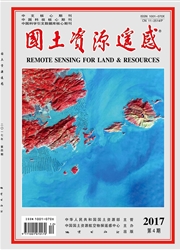

 中文摘要:
中文摘要:
以ASTER数据为数据源,采用同一颗卫星上的MODIS数据得到大气透过率;利用可见光和近红外波段对下垫面类型进行分类和利用JPL(Jet Propulsion Lab)提供的光谱库计算地表比辐射率,进而采用劈窗算法进行地表温度(Land Surface Temperature,LST)的反演。在此基础上,利用反演的LST、分类结果和归一化差值植被指数(NDVI),对沧州地区的城市热环境进行了定量分析,研究结果可为进一步深入探讨城市热岛的发生发展规律以及城市热环境的模拟调控、优化布局提供一定的科学依据。
 英文摘要:
英文摘要:
According to the Characteristics of the ASTER data, the authors calculated the atmospheric transmittance using the MODIS data from the same satellite, and then obtained the surface emissivity by means of the classification result on visible and near -infrared bands as well as the spectral library supplied by JPL (Jet Propulsion Lab). After that, the Land Surface Temperature (LST) was estimated by the split window algorithm. On this basis of LST retrieved from ASTER data, the authors analyzed quantitatively the urban thermal environment in Cangzhou area using the LST, the classification results and the Normalized Difference Vegetation Index (NDVI). These results can provide a certain scientific basis for the further exploration of the developmental rule of the urban heat island, the simulation regulation and the control and optimizing configuration of the urban thermal environment.
 同期刊论文项目
同期刊论文项目
 同项目期刊论文
同项目期刊论文
 期刊信息
期刊信息
